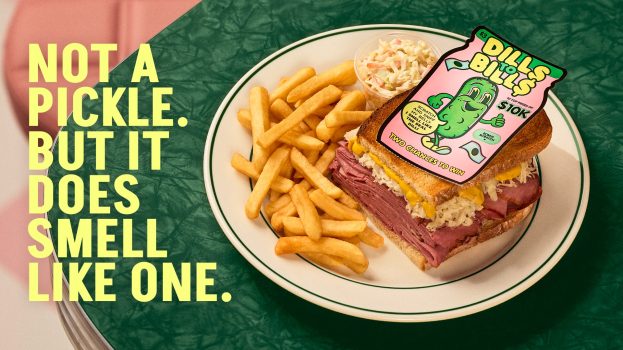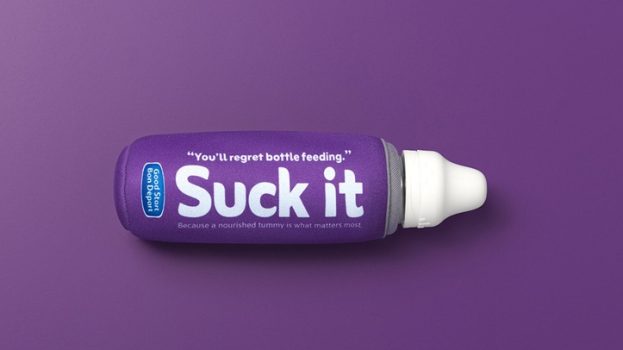It’s been my habit for many years to do the family grocery run on Saturday morning. Like many urban dwellers struggling to eke out an affluent existence, I regard such domestic routines as burdensome. Frankly, after a week of heavy lifting in the trenches of commerce, I’d rather be trout fishing.
Sadly, the only trout I am going to land is in the fish department at the supermarket. Since I am not the only one with this problem (as evidenced by the many other wistful fishermen or skiers I see wandering the aisles like drones) the good folks at Weston figured this out years ago and set out to reinvent the supermarket experience.
Its genius was to use design – both in its products and its environment – as its primary competitive weapon, which made it the retailer’s equivalent of a perfect storm. This double-barreled strategy – what retail environment designer Don Watt used to call ‘the total package’ – made grocery shopping something to look forward to.
Now, however, the shine is off the apple. What was once a temple to designer food has become a merchandising mystery. The grocer’s rapid-fire output of new products – capable of competing with and trouncing the premium brands – has waned. There are more low-price banners in the aisles now than groundbreaking new food ideas.
What happened? Wal-Mart.
Primarily a blue-collar destination in the past, Wal-Mart now has affluent customers who may buy a suit at Harry Rosen but are not afraid to drop in for underwear while grabbing some lightbulbs for their walk-in closet. And while they’re at it, why not pick up milk and dog food? It’s part of the ‘high-low’ shopping trend of the last 10 years. Well-heeled consumers are no longer ashamed to be seen at the discounters. Loblaws has tried to respond with its Superstore format, and by introducing general merchandise, but the effort has been lame.
The food, meanwhile, has gone to Sobeys and A&P/Dominion. Back in the day, when Loblaws upped the ante with President’s Choice and its new store designs, Sobeys and Dominion were forced to pull up their socks. A&P/Dominion responded with a brand strategy that proclaimed they were ‘fresh obsessed.’ They backed it up with a cult-like dedication to freshness in produce and meats, sending employees off to intensive training at ‘Fresh Obsessed School’ so they would get the message and deliver on it.
Sobeys is also looking fresher than Loblaws, thanks to a redesign. The green grocer has also innovated in the channels with its Express concept. Small (3,900-sq.-ft.) footprints, wonderfully integrated into existing neighbourhood streetscapes, are an innovative cross between the convenience store and the grocery store. The difference is the food: It’s much better than what you would find in a c-store, yet just as accessible.
The websites of these companies are revealing. Loblaws dedicates about one-tenth of its home page to food, while the home pages for Sobeys and A&P/Dominion are almost 100% food-focused. On the Sobeys corporate site, nothing is left open to interpretation. The strategy is spelled out front and centre: Focus on Food.
To its credit, Loblaws has recently started to use its HEALTHY Insider’s Report to promote its growing Blue Menu and Organics lines. And in an effort to respond to the voice of the customer, the company has invited her into the PC kitchen with its ‘Be a Blue Menu Product Developer for a Day’ contest.
Though laudable, this just reinforces the growing divide between Loblaws and President’s Choice, the latter of which is now looking like it has a lot more brand equity than its parent. With PC’s ability to extend into other product categories, we now associate it with innovation, not Loblaws.
Loblaws’ former innovations elevated our expectations of what a grocery store could be. Ironically, that made it a lot easier for affluent customers to justify a visit to specialty grocers like Longo’s or Pusateri’s in Toronto, or Whole Foods in Vancouver, or Pete’s Frootique in Halifax, where high quality defines the experience. So now it’s losing on both the low side and the high side.
In its efforts to combat the onslaught of Wal-Mart, the diversification strategy at Loblaws has obscured what made it great in the first place. Without its former merchandising magic and its groundbreaking food products, the thrill is gone, and I am no longer sure what the brand stands for.
Will Novosedlik is partner at Toronto-based Chemistry, a brand collaborative which links strategy to communication, organizational performance and customer experience.























